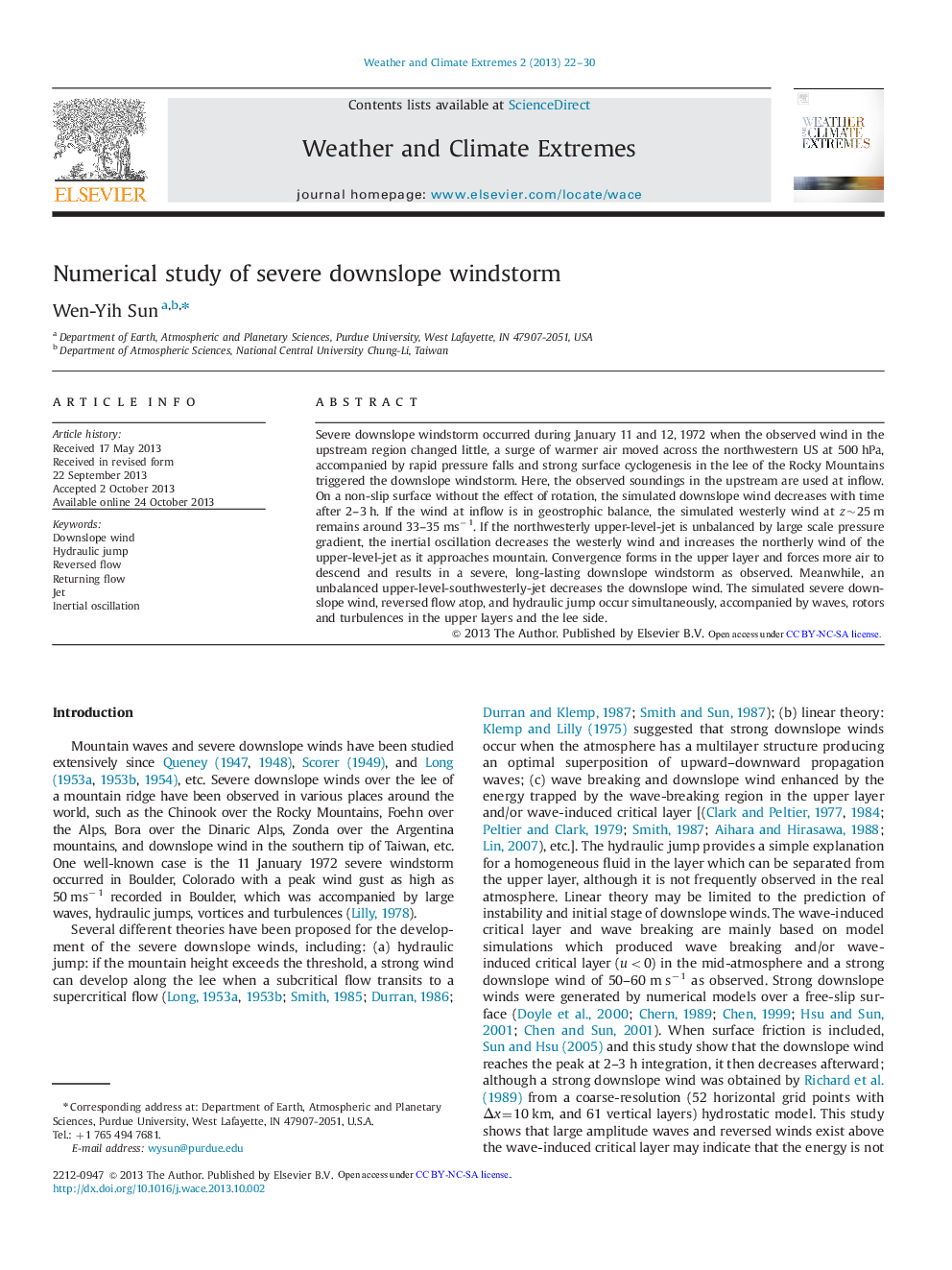| Article ID | Journal | Published Year | Pages | File Type |
|---|---|---|---|---|
| 1066766 | Weather and Climate Extremes | 2013 | 9 Pages |
Severe downslope windstorm occurred during January 11 and 12, 1972 when the observed wind in the upstream region changed little, a surge of warmer air moved across the northwestern US at 500 hPa, accompanied by rapid pressure falls and strong surface cyclogenesis in the lee of the Rocky Mountains triggered the downslope windstorm. Here, the observed soundings in the upstream are used at inflow. On a non-slip surface without the effect of rotation, the simulated downslope wind decreases with time after 2–3 h. If the wind at inflow is in geostrophic balance, the simulated westerly wind at z~25 m remains around 33–35 ms−1. If the northwesterly upper-level-jet is unbalanced by large scale pressure gradient, the inertial oscillation decreases the westerly wind and increases the northerly wind of the upper-level-jet as it approaches mountain. Convergence forms in the upper layer and forces more air to descend and results in a severe, long-lasting downslope windstorm as observed. Meanwhile, an unbalanced upper-level-southwesterly-jet decreases the downslope wind. The simulated severe downslope wind, reversed flow atop, and hydraulic jump occur simultaneously, accompanied by waves, rotors and turbulences in the upper layers and the lee side.
